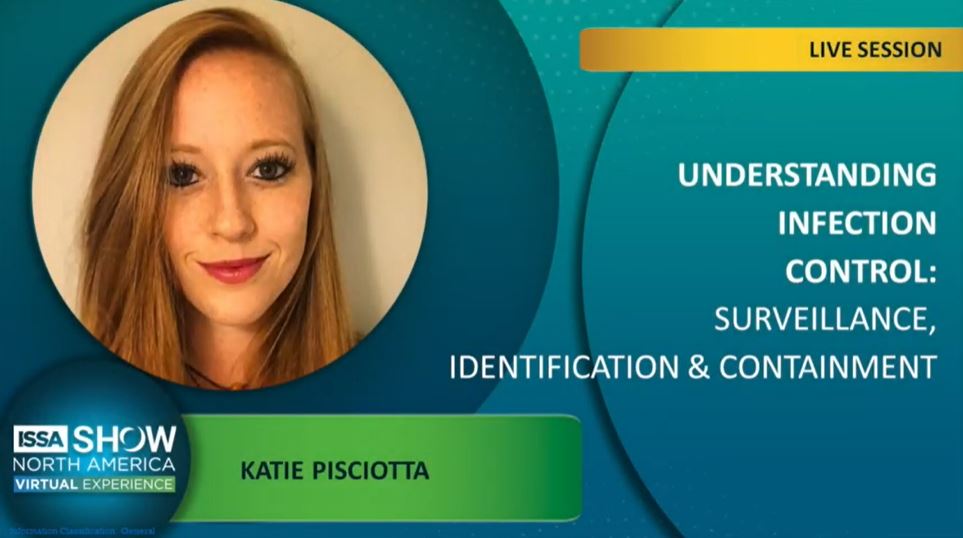If you registered for the ISSA 2020 Virtual Show, you might have been a little overwhelmed by the sheer number of talks and presentations. I know I was. I didn’t know where to start. This article is intended to act as a taste of the actual presentation. Taking an hour out of your day to watch a video might not sound like a good use of your time as a business owner. So, by the time you read this, you might decide for yourself if you want the full experience. If you weren’t sure if you wanted to attend the virtual show itself, then this article will serve as a way for you to definitively decide. Many of the presentations and products on display will be available until March 31st, 2021.
This talk was given by Dr. Katie Pisciotta about understanding infection control, something everyone should learn about in a time where a virus controls some aspect of our lives every day. This presentation was only about 30 minutes making it very easy to watch, while still being full of very useful information.
Dr. Pisciotta started off her talk with a graphic showing the statistics behind healthcare-associated infections, also known as HAIs. Some of which showed that 1.7 million people per year get an infection during a hospital stay, 98,987 people in the US die annually from HAIs, and if you are admitted to a hospital, you have a 5% chance of contracting an HAI.
Studies have shown the reduction of said infections is greatly improved by the education of environmental services staff. In order to reduce infections and improve outcomes, Katie says there are four main factors that all rely on each other. They are program development and implementation, interagency collaboration, increase compliance, improve education, training, and incentives. She goes into detail about how each of these are very important and relies heavily on each of them to work.
In order for you to understand your knowledge of infections, Katie says you should ask yourself these questions to see how much education you will require. If you don’t know the answer to these questions, it may be a good idea to take a course or to. They are:
- How are infections classified?
- 2. How many types of infections are there?
- What are the two made modes, or classifications of transmission?
- What are the infection control methods?
- Should environmental services be responsible for understanding infection?
- Should HIPPA ever be disregarded?
Luckily, she also answers these questions which are:
- infections are classified by the organism
- There are 6 types of infections (bacterial, fungal, viral, protozoan, parasitic, prion)
- Direct transmission(person to person and droplet spread), and indirect transmission (airborne, vehicle-borne, and vectorborne)
- Personal protective equipment, hand hygiene, contact precautions, avoid contaminating surfaces
- yes!
- no
There are also a few steps that will allow you to succeed in preventing infection. They include communication development, ensure accessibility of information, ensure staff compliance through accountability protocols, consistency in control measures, and evaluation. Doctor Pisciotta goes into detail on each of these steps as to how to properly accomplish these steps.
Overall, this presentation was very helpful to learn about infections, how they are spread, and how you as a cleaning business owner can effectively prevent the spread of infections. If you want to watch his video, click the link below!






